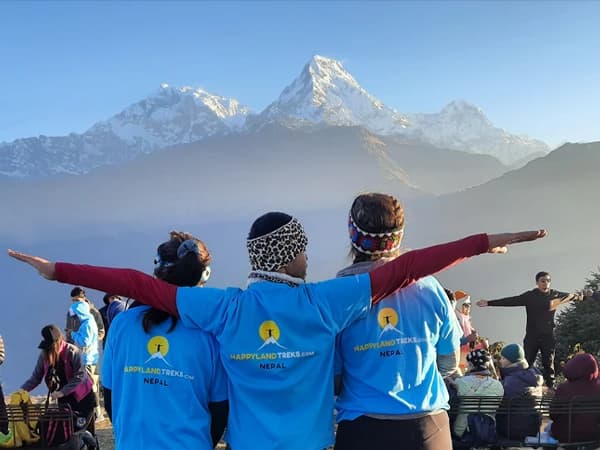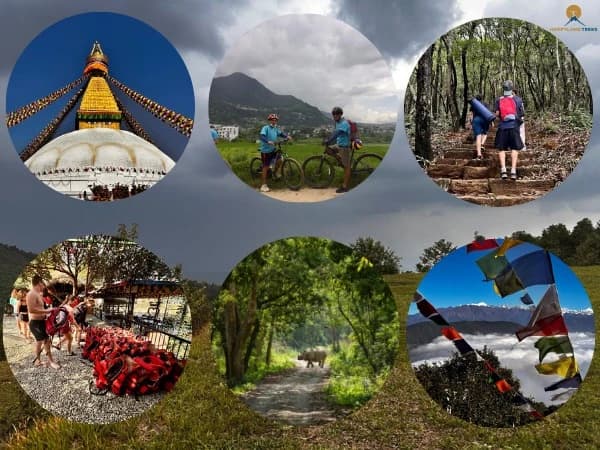Tips for First-Time Visitors to Everest View Trek
- If you’re planning your Namche Bazaar Everest view trekking, here’s what matters:
- Don’t just pass through the old school ancient villages and mountains, feel it.
- Acclimatize properly, don’t rush.
- Drink water constantly, avoid too much alcohol.
- Explore side hikes — they’re the real treasure.
- Support local shops, even small purchases help.
- Use proper layers.
- Bring cash. Card machines work in Namche sometimes, but smaller teahouses and market stalls take cash only.
- Enjoy small rituals. Spin a prayer wheel, accept a cup of butter tea with gratitude.
- Try traditional high Himalayan foods.
- And above all: slow down.
Namche Bazaar Everest View Trekking: Short Trek Destination
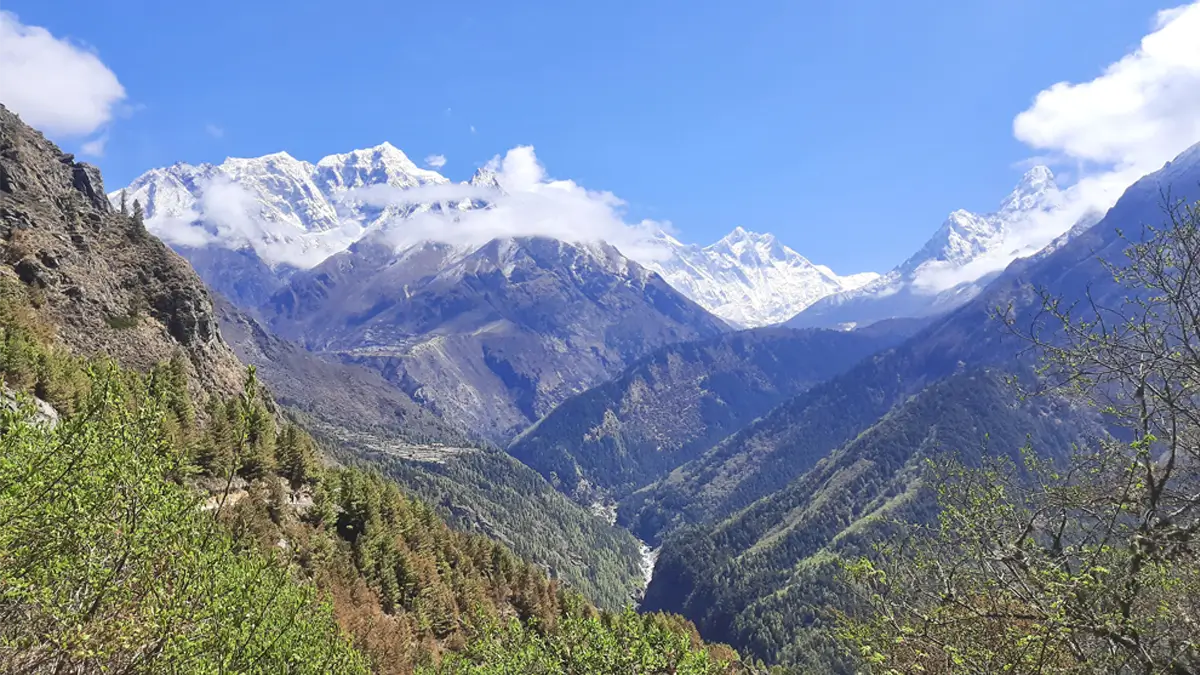
Not everyone makes it to Everest Base Camp. Honestly, you don’t have to if you don’t have time.
Flying to Lukla, and trekking up to the Sherpa capital, Namche, hiking to the Everest View Hotel, and coming back — all in a week — still gives you the thrill.
You don’t have to commit weeks of your life, but you still get a taste of the Everest Himalayas, the villages, and the culture that has fascinated trekkers for decades.
And the best part? It’s fully customizable. You can keep it short and sweet, or stretch it a little to explore side routes, monasteries, and hidden valleys that most travelers never even hear about. You can also see Yeti’s scalp and hand with you own bare eyes by short hike from Namche Bazaar.
You’ve crossed Hillary suspension bridge, heard yak bells, eaten Sherpa stew, seen Everest with your own eyes. That’s already more adventure than many people live in a lifetime.
Namche Everest View trek proves that the Himalayas aren’t about ticking off checklists. They’re about moments. and Namche offers plenty.
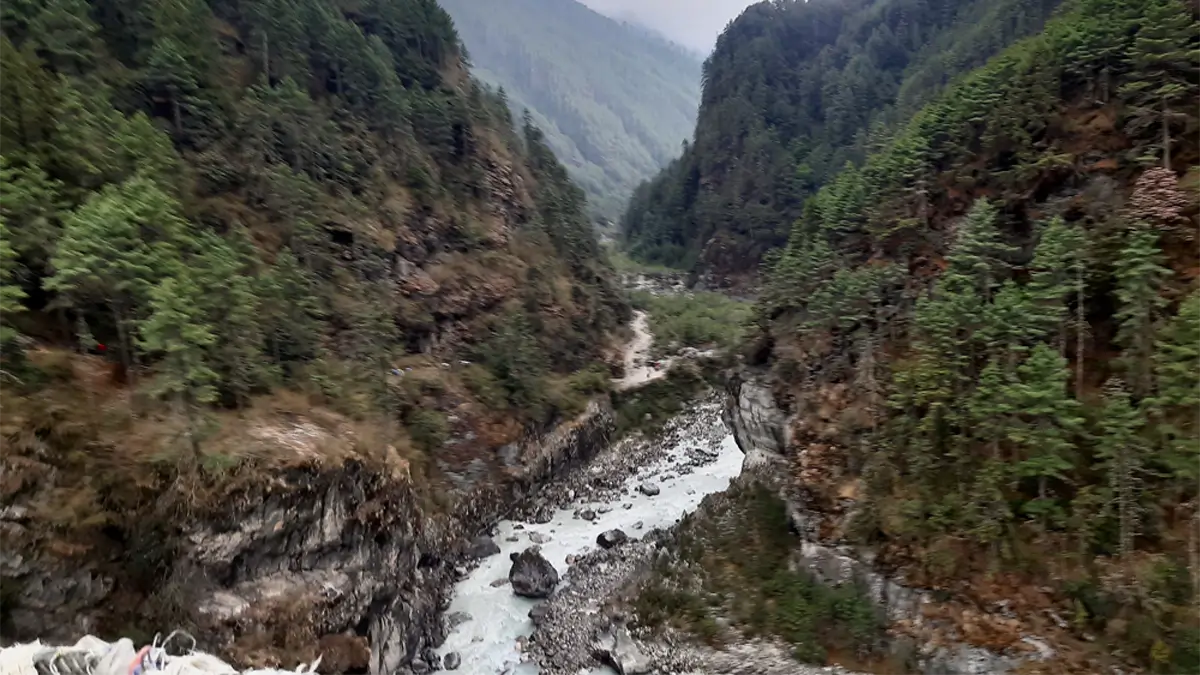
Tea Houses Namche Bazaar Everest View – Traditional and Soulful
Tea houses you witness during the Everest view trekking are traditional and advanced than other trekking routes.
Here, tea houses are home. Cozy beds, comfortable toilets, warm blankets with the panoramic views of snow-capped giants, and warm Sherpa Hospitality. (But nowadays, Along the Namche Bazaar Everest view trek is a more luxurious accommodation with indoor toilets and showers.
Sitting around the dining hall and woodfire heater, talking with other trekkers, playing cards, laughing with locals — that’s the charm. Every tea house has its own personality.
Some are run by families, some by groups of young Sherpas. They all share one thing: hospitality.
The Famous Everest View Hotel near by Namche Bazaar
Luxury Everest view hotel near by Namche Bazaar is built on a ridge above the town, Everest View Hotel is legendary because from its terrace you can sip coffee while staring directly at the world’s highest mountain.
The hike itself takes about 2-3 hours uphill from Namche Bazaar, through stone steps, with the Himalayas, ancient mountain villages, chortens, mani walls, and prayer flags guiding your way.
The moment Everest and other high peaks reveal themselves, many trekkers fall silent. Some even cry. The view isn’t just scenery; it’s a moment of realization. You are really here, in the land of giants.
Everest View Hotel also offers surreal comfort and luxury — soft chairs, pastries, and quiet glass windows shielding you from the sharp Himalayan winds. For many, this side hike alone feels like a dream fulfilled.
Trekking Trail to Namche Everest View
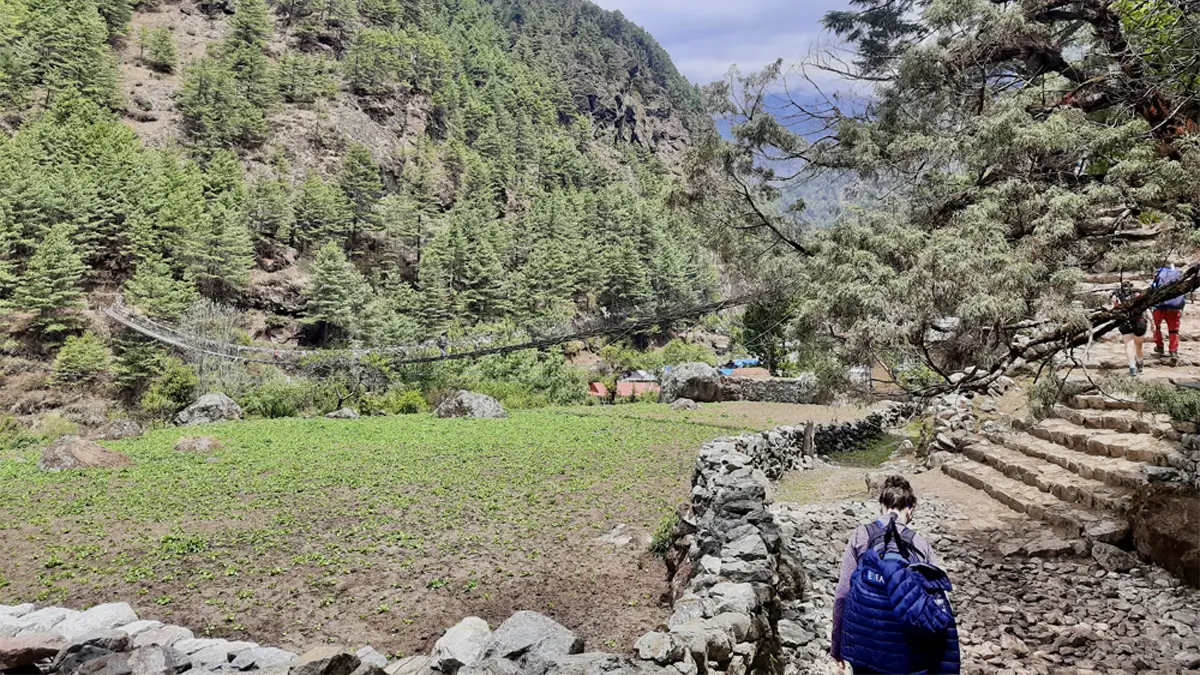
The path to Namche Bazaar isn’t a straight walk. It’s forests first — alpine terrain, mystical cave faces, old age sacred gompas, hanging bridges swinging above roaring rivers.
The path to that ridge where Everest first shows its face is not a sterile, but uniform track. It’s a living story, written in stone, wind, and human footsteps.
The geography tightens as valleys narrow and walls of stone look ancient enough to tell stories. Switchbacks take you up; each bend teases a new view. Then suddenly the amphitheater: Namche spread below, houses like little postage stamps, and beyond, the huge vertical face of peaks.
The friction of steep terrain gives rise to quiet epiphanies on ridges where the world seems wide and accessible, frightening and beautiful often at the same time.
Geographically, it is a corridor — a route used for centuries by traders, pilgrims, and now trekkers. Culturally, it links villages and practices across the Khumbu.
Terrain & Geology Lukla Namche Bazaar
The path from Lukla to Namche Bazaar is carved into hillsides that seem alive. You’ll journey through pine, rhododendron forests, high rolling hills, rock faces sliced into glaciers’ jaws, cascading waterfalls that cut through cliffs, and mani stones etched with prayers.
The trail itself is a cross-section through time. At lower elevations, you’ll step on rounded cobbles and alluvial deposits; these are river-smoothed stones, globes tumbled by the Dudh Koshi since before your grandparents’ grandparents were born.
You can see spiritual cave faces throughout the trail. The caves over the trail consist of higher frequencies of energy.
A Spiritual Layer on the Everest View Trail
There is a spiritual grain woven through this route. The Khumbu region treats the landscape as animate: mountains are mothers and gods; mani walls whisper prayers; stupas punctuate high points like punctuation in a holy sentence.
You hear monks chanting high-vibration mantras in the morning and evening at sacred gompas. They perform ancient rituals and sometimes fire puja. Every local has one prayer room, where they pass mantras and teach spiritual rituals to new generations.
You feel the high-frequency energy of the raw mountains and nature around you. If you walk barefoot, you feel the pure ground energy of nature beyond high Himalayas.
Villages You’ll Pass
The villages along this corridor are not mere backdrops. Each settlement is a small universe. Early on you might pass Phakding — a tidy string of lodges and teahouses where porters gather and trade goods.
There’s Monjo, the gateway to Sagarmatha National Park, where park check point and permits remind you this area is managed for conservation. As the trail climbs, Jorsalle appears, then Namche, the bustling hub.
Namche Bazaar deserves an exhale. It’s not a remote camp; it’s a real mountain town with bakeries, internet cafes, shops selling high-altitude gear, and a market that pulses on certain days.
There’s a hum of the modern world, yes, but layer it with prayer flags, mani stones, and a culture that still prioritizes hospitality. A cup of yak butter tea here is more than refreshment.
Suspension Hillary Bridge Before Climb to Namche Bazaar
The Hillary Suspension Bridge is one of the most thrilling highlights of the Namche Bazaar Everest View, including the Everest Base Camp trek. (Hillary Bridge just 2:30 hrs before the climb uphill to the Namche Bazaar)
Named after Sir Edmund Hillary, the first climber of Everest along with Tenzing Norgay, this bridge hangs hundreds of feet above the roaring Dudh Koshi River.
Long, swaying, decorated with thousands of prayer flags fluttering wildly in the wind, the Hillary Bridge forces every trekker to conquer fear. Yaks loaded with goods march across casually while trekkers hesitate, cameras in one hand, trekking poles in the other.
The Hillary Bridge is a gatekeeper — once you’ve walked it, you step into Sherpa world of 8000+ meters peak. This is the symbolic doorway into the Himalayas, connecting not just trails but souls of different culture.
Below, the turquoise glacial river rushes, many trekkers remember this crossing as clearly as their first view of Everest.
Best Time For Everest View Trek
Every season has its own uniqueness. Everest view trek is possible in every season. Deciding on which season you’d like to do the Namche Everest trek depends on you.
Spring (March-May)
- The trail is full of vibrant, colorful rhododendrons.
- This is the best time if you want color + clarity.
- This season offers crisp skies, clear views, and Everest gleams like a diamond.
- The weather is moderate, perfect for trekking.
Autumn (September-November)
- This season offers crystal-clear skies.
- Forests and ancient valleys turn colorful.
- The weather is stable.
- We can get clear views of the mystical high Himalayas.
Winter (December to February)
- The Everest region is less crowded during winter.
- Cheaper lodges.
- The Khumbu region is raw, almost mystical quiet. You’ll earn your views.
- Snow blanketed trails, the trail turns into winter wonderland.
- The weather is little cold, but very much manageable with proper layer of clothing’s and gear.
Monsoon (June-August)
- The trail is less crowded.
- Forest greenery is at its peak and we can get lush green landscapes.
- We can witness dramatic and changing landscapes; every minute, the landscape changes.
- The forested path is full of fog.
With fewer guests, tea house owners have enough time so you can immerse into local culture and understand the tradition better.
So, best time? Depends on you. Want flowers and lush greenery landscapes? Spring. Want perfect skies? Autumn. Want peace and snow-blanketed trails? Winter. Want dramatic landscapes that change every minute? Monsoon. That’s the deal.
Mountains Seen during Everest View Trek
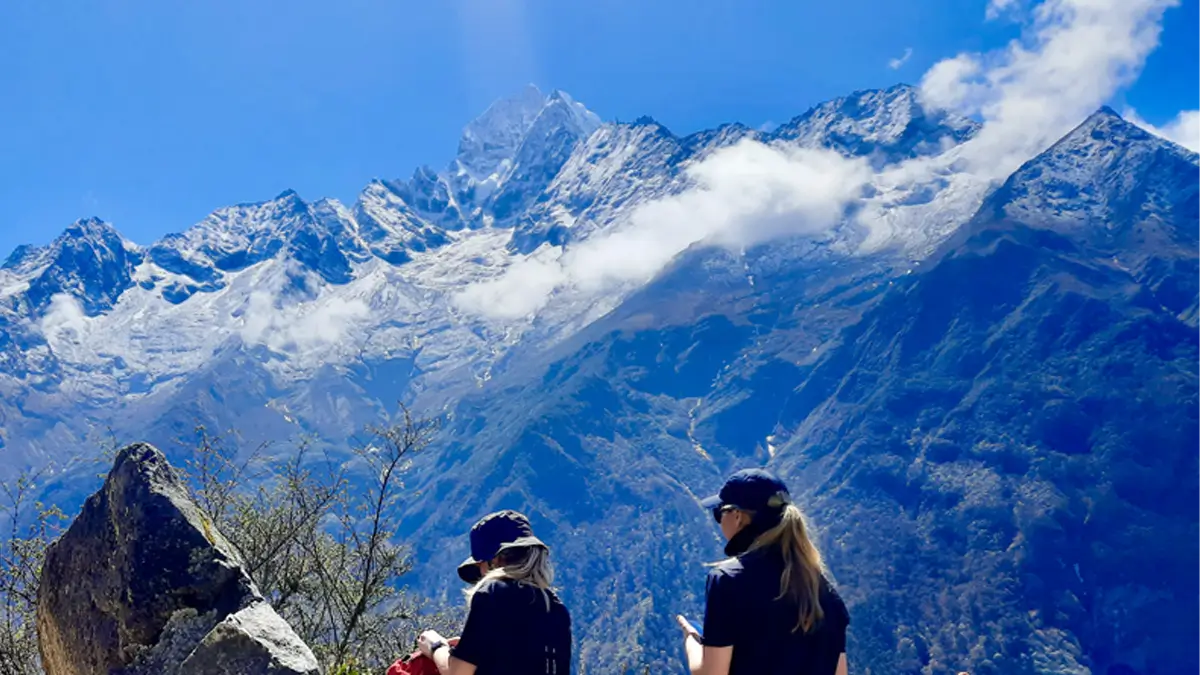
A Stage of Giants Standing on the ridge above Namche, the panorama smacks you in the chest. Everest rises clear. Ama Dablam, sharp and elegant, steals many hearts. To the west, Kongde Ri forms a jagged curtain.
On crisp mornings, even Cho Oyu flashes its snowy crown. The thing is, photos flatten them. Standing there, they feel alive. They don’t just “stand tall” — they loom, they breathe.
Every trekker says the same thing that, we can get million-dollar panoramic mountain views in Everest view trek.
If you have fewer travel days and want to witness the Everestview without high altitude trekking to Everest Base Camp, this short trek is the perfect choice.
Food on the Trekking Trail
During the Namche Bazaar Everest view trekking or hiking, you will find many different types of food like Nepalese, Western, and European.
You’ll also find bakeries serving apple pie, tea houses offering yak butter tea (believed to help with altitude), and even yak steak for the adventurous.
Famous Nepali food is Dal Bhat. Dal Bhat is a Nepalese combo meal which comes with plain rice, curry, and lentil soup. Pickel. Etc.
You can taste many different types of meals like Momo, Noodle, Thukpa, Steak, Sherpa Stew, Fried Rice, Potato, Pasta, Pizza, Burger, Macaroni, Green Salad, Bread, Chapati, Pancake, Eggs, Soup, and many more.
Food on the trail is more than just calories. It’s comfort. It’s warmth. After hours of walking, sitting in a viewpoint, and enjoying nature.
Everest Panorama Trek – Million Dollar View, Less Time
Not everyone can spare extra weeks for the full Everest Base Camp trek. That’s why the Everest Panorama Trek exists.
Centered around Namche Bazaar Everest View trekking, it takes you just far enough to witness Everest, Ama Dablam, Nuptse, Lhotse, Thamserku, Makalu, Manaslu, Island Peak etc. and the Khumbu landscape without pushing too high.
It’s perfect for families, first-time trekkers, or those who want Himalayan beauty without exhausting altitude.
The Everest Panorama trek proves you don’t need to reach Base Camp to feel Everest’s magic — sometimes, a glance is enough to change you forever.
When Everest and another 8000 meters+ mountains finally show their heads above the ridges, time freezes. People cry nervously. Some trekkers get tears in their eyes.
Why Choose Namche Bazaar Everest View Trekking?
Not everyone has two weeks for Everest Base Camp. And not everyone wants to risk altitude sickness at 5,000+ meters. That’s where the Everest view trek shines. It offers:
- A Taste of High-Altitude Trekking (Without Going Extreme).
- Close encounters with Everest and neighboring giants above 8000 meters.
- Immersion in mountain Sherpa culture.
- Get a chance to witness Yeti’s Scalp and hand with your bare eyes.
- A manageable duration (7 days round trip from Kathmandu).
- Stand one on one with the world’s highest mountain, Mount Everest within short duration.
- Many first-time trekkers choose this route as a “warm-up” for bigger adventures.
- Others do it simply for the joy of being surrounded by the world’s highest Himalayas, with less physical demand.
- Namche Everest trek offers this rare privilege: to see Everest without extra weeks of hard trekking.
- A safer option for beginners and family trekkers.
- Less time-consuming than the Everest Base Camp trek but equally rewarding in terms of views.
- Witness million-dollar Everest panorama within a week.
The Heavenly Flight to Lukla for Namche Everest
What if I say you can see Mount Everest at your first day of the trek from inside the plane?
The first day of your high Himalayan adventure starts from a flight to Lukla. You feel like entering to higher dimension of Himalayan giants above 8000 meters.
You can see 360 degree panoramic views of Himalayan giants like Mount Everest, Pumori, Nuptse, Makalu, Thamserku, Taboche, Pumori, Island peak, Lobuche East, Lobuche West, Nutse Shar, Lhotse and many more from inside the plane.
Namche Bazaar: Gateway To Everest
Namche Bazaar, jammed at 3,440 meters, operates as a central logistical node. Pretty much everyone on an Everest or high trek swings through here. It’s basically the supply chain nerve center for the whole Khumbu region.
Namche Bazaar is also called the Sherpa capital. You can see yaks trotting through winding little alleys, shopkeepers with big grins selling supplies, Tibetan traders hauling sacks of salt.
Namche plays a critical cultural and operational role in local society. The infrastructure includes ancient traditional tea houses, retail outlets specializing in western trekking equipment, and facilities for communal gathering, such as market squares and gompas.
These features collectively support the influx of both tourists and local inhabitants, while sustaining key regional functions, including essential resupply, cultural events, and support for high-altitude expedition preparations.
Khumjung Village: The Mystics of Himalayan Yeti
A short hike from Namche takes you to Khumjung, a village less touristy but deeply authentic and traditional. This is where Sir Edmund Hillary built a school.
This is where you can see Yei’s Scalp and hand with your bare eyes. There is ancient spiritual Khumjung monastery, where the yeti’s scalp and hand is preserved for more than 300 years.
Khumjung’s old school green-roofed houses sit quietly under the shadow of sacred peaks. Life feels slower and wonderful here.
Sir Edmund Hillary also carried Yeti’s Scalp to America to research.
Sherpa Culture in Namche Everest
Namche is the capital of mountain heroes, Sherpas. This is where traders from as far as Tibet and lower Solu Khumbu gather. The Sherpas connection with nature is spiritual.
Sherpas serve dual functions in high-altitude expeditions—they’re indispensable logistical operators, but also the principal agents sustaining the region’s unique cultural matrix.
In Namche, analysis pinpoints the monastery as the central node of spiritual engagement. Culturally, Everest, referred to locally as Sagarmatha or Chomolungma—functions as a religious symbol, referred as a protective deity overseeing the region.
Acoustic analysis would reveal the persistent low-frequency chants, which, coupled with prevailing wind patterns, create a unique auditory environment.
Navigating this terrain isn’t just physical movement over altitude or coordinates. It inherently requires immersion into local epistemologies and adaptive behaviors developed by Sherpa communities.
The outcome? Trekkers acquire not only quantitative visual data (those 360 panoramic views), but also qualitative insights into the anthropological structures embedded within the Himalayas’ human ecology.
For families, older travelers, or those short on time, the Namche Bazaar Everest view trekking is like having the Himalayan cake and eating it too. You get the magic without the marathon.
Trekking Acclimatization Day – Hiking Higher, Sleeping Lower
If you rush, you risk altitude sickness. That’s why most trekkers spend a day in Namche to acclimatize. The side hikes from here are amazing — Everest View Hotel, Syangboche airstrip, and even Khumjung village, where you can see Yeti’s Scalp and hand with your bare hand.
Walking higher during the day and sleeping lower at night helps your body adjust. And honestly, having an “extra” day in Namche is a blessing.
It gives you time to sip coffee at bakeries, chat with local Sherpas, immerse into ancient mountain culture and soak up the raw energy of the Himalayas.
Namche isn’t just acclimatization. It’s the cultural pulse of the Khumbu. Spend time here, and you’ll see why Namche Bazaar Everest view trekking feels complete even if you never go higher.
Lukla airport is one of the high-altitude airports in the world. It looks like someone just glued a landing strip to the side of the mountains and high Himalayas.
Acclimatization on Namche: Rest, or Something More?
Here’s the truth: you don’t “rest” in Namche. You wander. You climb higher to adapt and feel raw energy of Himalayas and nature.
Most trekkers head up to Everest view Hotel or to Khumjung village, not because guides tell them to — but because everyone wants a first glimpse of the mountains that brought them here.
If you have time you can visit the sacred Khumjung monastery, where you can witness real Yeti’s scalp and hand, preserved for 300 years.
These small hikes are like rehearsal, little teasers before the big stage of Everest trekking.
Things to do in Namche Bazaar (Besides Trekking!)
Namche is often called the Sherpa capital, and it earns that name. You’ll find markets buzzing with traders who carry goods on their backs from Lukla. Saturdays are market day — chaotic, colorful, alive.
You can sip cappuccino in the high altitude bakeries, browse trekking gear shops, or visit the Sherpa Culture Museum to understand the people who’ve lived here for centuries. And then there are pubs.
Yes, pubs at 3,440 meters! Imagine sipping a local millet beer, swapping stories with trekkers from around the globe, while outside, Everest stands guard. Only Namche Bazaar Everest view trek can pull that off.
Comfort in the Cold – Lodges, Food, and Shared Laughter
Here’s the beautiful contradiction: at 3,440 meters, you still find bakeries. Real bakeries! German bread, apple pie, chocolate croissants.
You can also taste authentic traditional high Himalayan foods like Sherpa Stew, Yak butter tea, Tsampa, Thukpa, Rildok, Tingmo, Sea buck juice, Khapse, Somar, Millet beer, Thenthuk etc.
The lodges in Namche are warmer than you’d expect too. Wood stoves glow in the evenings. Trekkers all over the world sit together over steaming bowls of dal bhat, swapping stories. A stranger at breakfast might become your trekking partner tomorrow.
And yes, Wi-Fi flickers on and off, sometimes wifi may not work because of altitude problems, but somehow nobody cares. Life feels stripped down here — not much luxury, but enough comfort to keep your heart open and your body ready.
Sherpa Hospitality: The Warmth Behind the Cold Air
Trekkers always say the Himalayas aren’t just about mountains; they’re about people. In Namche, this is truer than anywhere. Sherpa families run most of the teahouses.
You can get local experience at traditional tea house of the Everest region. Sherpa people share their culture and traditions and greet you with a warm smile and a blessing scarf.
Sherpa people welcome trekkers as part of their own family. The hospitality of legendary mountain heroes?
They’ll serve you dal bhat with a smile, check on your health, and sometimes even share stories of their fathers and grandfathers who summited Everest. There’s a humility here that humbles you in return.
Once, a Sherpa woman laughed at how red my cheeks were from the cold. She brought me butter tea — strange taste, salty and thick — but it felt like love in a cup. These moments stay long after the trek is over.
Locally Owned Trekking Operators – Why They Matter
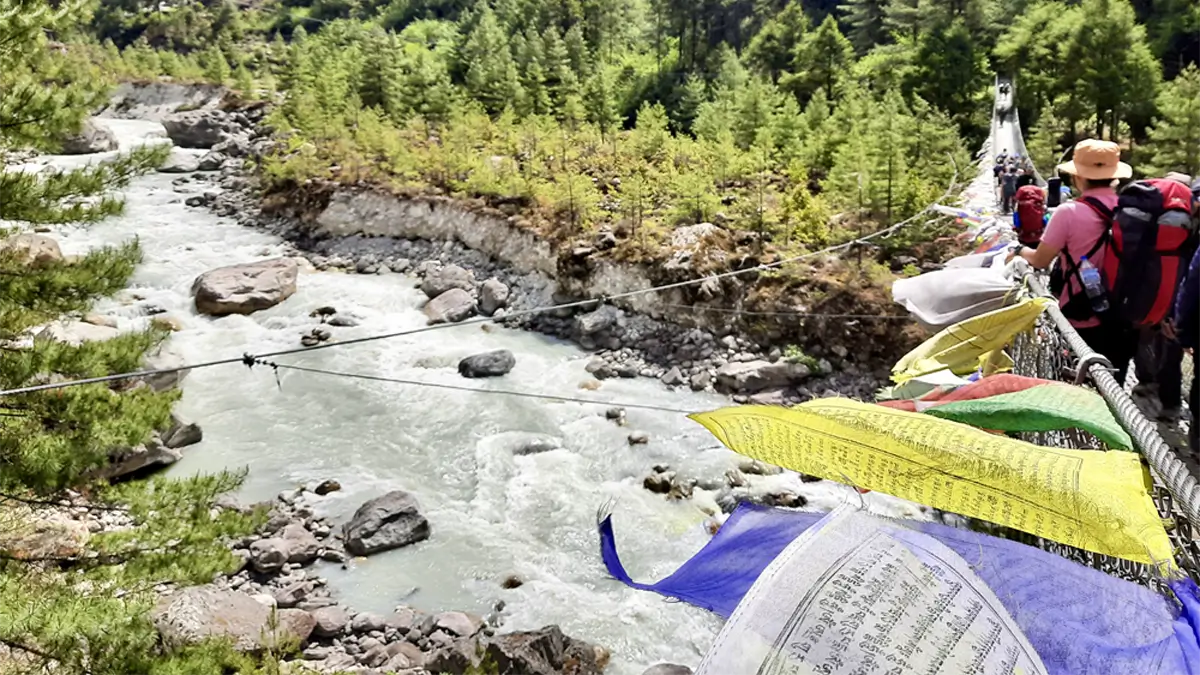
In the Everest region, choosing a locally owned trekking operator isn’t just a decision — it’s an investment. When you walk the Namche Everest view trekking with legendary mountain heroes, Sherpas, the experience transforms.
Why? Because every dollar you spend goes back to local families, to communities that preserve this land, money stays in the villages, fueling schools, monasteries, and to local guides who know the trail like their own heartbeat. They take you to hidden corners tourists never see.
Big foreign companies may promise fancy deals, but locals know the stories, the legends, the hidden corners, and secret viewpoints.
Locally owned operators mean cultural immersion. You’ll hear folktales, eat authentic Himalayan food, and laugh with Sherpas who carry the Himalayas in their souls.
Walking with a Sherpa guide: the legendary mountain heroes and locally owned trekking operators isn’t just trekking — it’s entering a living Himalayan heritage. And that’s priceless.
Every step becomes authentic, every pause meaningful. And honestly, isn’t that why we trek?
Group and Private Guided Trek
Let’s be real — trekking alone in Nepal sounds full of risk and adventure, but with a local Sherpa guide, everything changes.
In group tours, you meet strangers who often become friends. The laughter, the shared struggles, the group photos at viewpoints.
Private guided tours? Total flexibility. Stop for an hour to chat with a monk, stop where you like, walk at your own pace. Guides often share more stories in one-on-one settings. It lets you immerse yourself in local tradition, personally and deeply. If you’re after comfort and a deeper cultural exchange, private is the way.
Group and Private Guided Tours with Local Operators
Walking with a local operator means you’re not just following a trail map. You’re entering their local world. Local operators provide you with local trekking guides, the legendary heroes of mountains.
If you go with a local operator, the journey shifts from being a “trek” to something closer to a cultural exchange. Why? Because local guides grew up on these very trails.
Local operators matter most guides from Kathmandu, Lukla, Namche, and nearby Khumbu villages, and other community village know every bend, every shortcut, hidden viewpoints, mystical caves, and the best sunrise spots. They don’t just point out Everest; they tell you which family owns that potato field, or which monastery bell has rung since the 16th century.
Now, group tours have their own charm. Imagine hiking with a bunch of people who start as strangers but end up sharing tea, laughter, and sometimes even blisters. The group energy pushes you when you feel tired. You celebrate small victories together, like reaching a viewpoint or finishing that endless uphill stretch.
Private tours, though, are personal. It’s your pace, your rhythm. Want to stop for twenty minutes because a kid in the village is showing you his pet goat? No problem. Local guides are flexible, and honestly, you end up learning way more about culture when it’s just you and them.
And let’s not forget — booking through a local trekking company means money goes directly into the community. Sherpa families, teahouse owners, porters. Their reputation is everything. By hiring them, you’re putting food on the table for Sherpa families, porters, and cooks. They benefit when you choose local instead of big international corporations.
It means schools get funded, trails get maintained, and locals feel proud of their culture being valued.
The Emotional Goodbye to Namche Everest
Leaving Namche hurts. You descend the same steep paths you once climbed, but now every corner feels nostalgic. You look back often — at the colorful traditional roofs, at the snow draped mountains standing proud behind them, and you realize part of you is staying behind.
The Sherpa family who hosted us hugged like we were relatives. Their eyes said more than words. Walking away from Namche, the trail felt longer, my boots heavier, as if each stone didn’t want to let me go.
It hurts a little. I felt lighter at altitude and heavier with attachment. I realized the trek gave you not just vistas but hospitality. I promised myself to return back. It feels like leaving family
Every trekker says it differently, but the feeling is the same: Namche isn’t just a place you visit. It’s a place that visits you. Again and again, in memory, in dreams. That’s why the Namche Bazaar Everest view trekking isn’t just a journey on the map. It’s a journey inside you.
FAQs- Namche Bazar Everest View Trekking
How many days does the Namche Everest View Trekking take?
A: Typically, 7-9 days, depending on your itinerary. You can make it shorter if you’re tight on time, or extend it with exciting side trips to nearby gems.
Is the Namche Everest View Trek Difficult?
A: It’s considered moderate. The trek involves uphill climbs, but it’s much easier compared to Everest Base Camp. Even beginners with average fitness can complete it.
Do I Need Permits for the Namche Everest View Trekking?
A: Yes. You’ll need the Sagarmatha National Park Permit and the Khumbu Pasang Lhamu Rural Municipality Permit.
Do I Need a Guide for This Trek?
A: It’s possible to trek independently, but having a guide enriches the experience with local insights, cultural immersion, safety, and easy access.
How High do you go on the Namche Everest View Trek?
A: Namche Bazaar sits at about 3,440 meters, and the Everest View Hotel viewpoint is around 3,880 meters. Altitude symptoms are possible but manageable.
Do I Need to Acclimatize for This Trek?
A: Yes, one acclimatization day in Namche is recommended to adjust to the altitude.
Is Namche Bazaar worth Visiting even if I don’t Trek Further?
A: Absolutely. Namche has a unique mix of mountain views, cultural landmarks, cafés, bakeries, and a vibrant Sherpa community.
What Makes the Everest View Hotel Special?
A: It’s one of the highest luxury hotels, perched at 3,880 meters, giving panoramic views of Everest right from its terrace.
Can Families with Children do This Trek?
A: Yes, many families choose it because it’s short and safe compared to longer treks. Children with decent fitness can manage.
Are there Good Lodges and Food Options on the Trail?
A: Yes, from basic tea houses to comfortable lodges, and hotels. You’ll find local Nepali dishes, Tibetan food, and even bakeries in Namche.
How do Sherpas Contribute to the Namche Everest View Trek Experience?
A: They’re not just guides and porters. The legendary mountain heroes, Sherpas, are storytellers, cultural custodians, and warm hosts who add depth to the entire journey.
Is Namche Everest View Trek Customizable?
Yes, it’s fully customizable. You can add trekking days if you want to explore nearby hidden gems and decrease trekking days if you are short in time.







